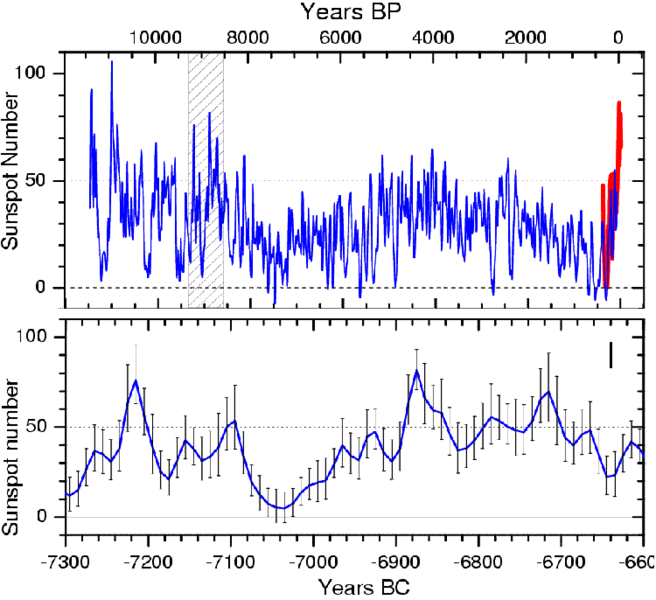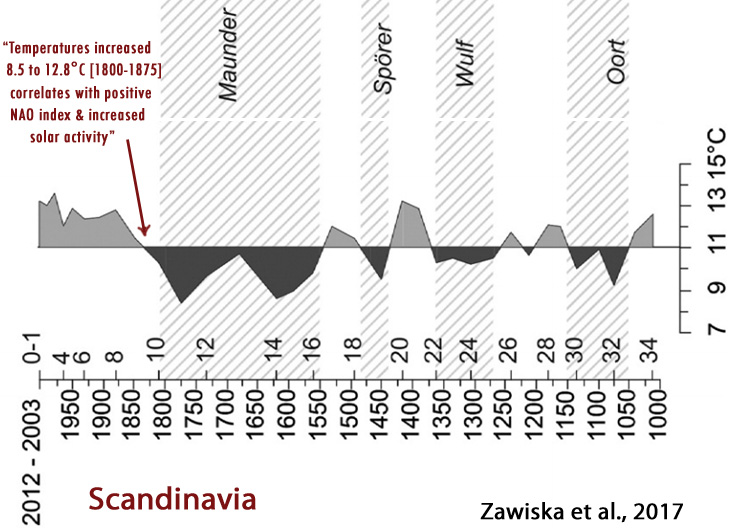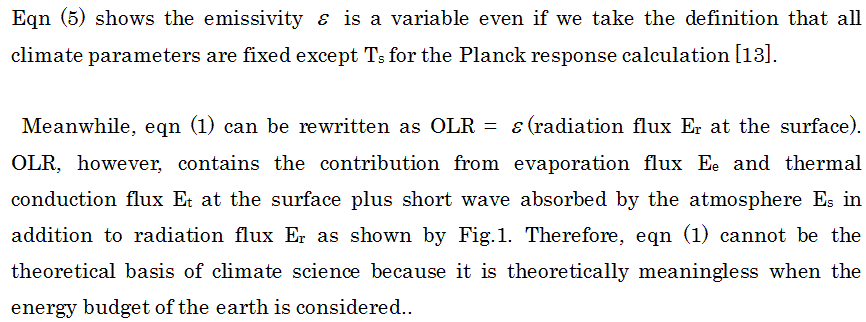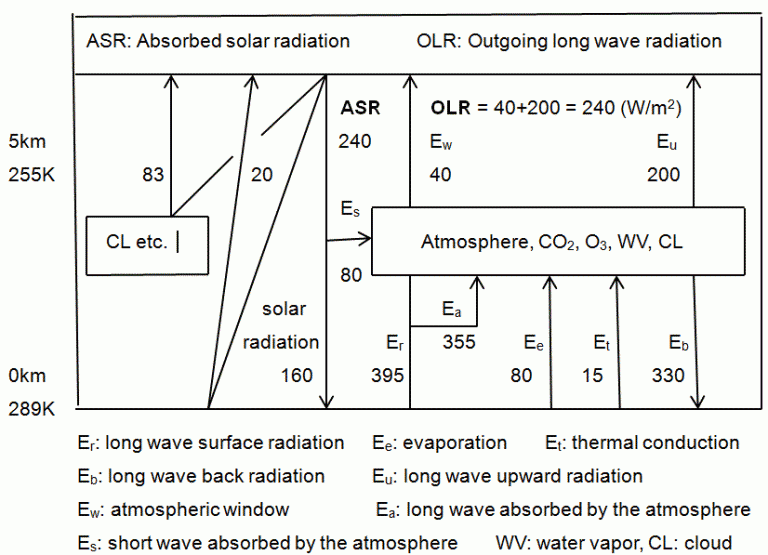And hey, Max Plank Institute:
https://www.mpg.de/research/sun-activity-high
For many studies concerning the origin of solar activity and its potential effect on long-term variations of Earth's climate, the interval of time since the year 1610, for which systematic records of sunspots exist, is much too short. For earlier times the level of solar activity must be derived from other data. Such information is stored on Earth in the form of "cosmogenic" isotopes. These are radioactive nuclei resulting from collisions of energetic cosmic ray particles with air molecules in the upper atmosphere. One of these isotopes is C-14, radioactive carbon with a half life of 5730 years, which is well known from the C-14 method to determine the age of wooden objects. The amount of C-14 produced depends strongly on the number of cosmic ray particles that reach the atmosphere. This number, in turn, varies with the level of solar activity: during times of high activity, the solar magnetic field provides an effective shield against these energetic particles, while the intensity of the cosmic rays increases when the activity is low. Therefore, higher solar activity leads to a lower production rate of C-14, and vice versa.
By mixing processes in the atmosphere, the C-14 produced by cosmic rays reaches the biosphere and part of it is incorporated in the biomass of trees. Some tree trunks can be recovered from below the ground thousands of years after their death and the content of C-14 stored in their tree rings can be measured. The year in which the C-14 had been incorporated is determined by comparing different trees with overlapping life spans. In this way, one can measure the production rate of C-14 backward in time over 11,400 years, right to the end of the last ice age. The research group have used these data to calculate the variation of the number of sunspots over these 11,400 years. The number of sunspots is a good measure also for the strength of the various other phenomena of solar activity.
The method of reconstructing solar activity in the past, which describes each link in the complex chain connecting the isotope abundances with the sunspot number with consistent quantitative physical models, has been tested and gauged by comparing the historical record of directly measured sunspot numbers with earlier shorter reconstructions on the basis of the cosmogenic isotope Be-10 in the polar ice shields. The models concern the production of the isotopes by cosmic rays, the modulation of the cosmic ray flux by the interplanetary magnetic field (the open solar magnetic flux), as well as the relation between the large-scale solar magnetic field and the sunspot number. In this way, for the first time a quantitatively reliable reconstruction of the sunspot number for the whole time since the end of the last ice age could be obtained.
Because the brightness of the Sun varies slightly with solar activity, the new reconstruction indicates also that the Sun shines somewhat brighter today than in the 8,000 years before. Whether this effect could have provided a significant contribution to the global warming of the Earth during the last century is an open question. The researchers around Sami K. Solanki stress the fact that solar activity has remained on a roughly constant (high) level since about 1980 - apart from the variations due to the 11-year cycle - while the global temperature has experienced a strong further increase during that time. On the other hand, the rather similar trends of solar activity and terrestrial temperature during the last centuries (with the notable exception of the last 20 years) indicates that the relation between the Sun and climate remains a challenge for further research.













